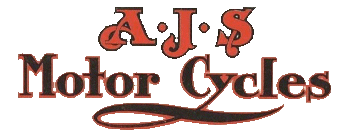


You need a bench of some description. My first one was an old kitchen table, my second was a large wooden shipping crate turned upside down. My current one, is a proper bench I have made with the wood from the shipping crate and the plans from a woodworking book out of my local library.
You need a vice. Don't buy smaller than 6in or 150mm and try to buy a steel fabricated one rather than cast iron.
You also need a container as a parts cleaner, filled with Paraffin or Kerosine depending where you come from. My first container was a 20 litre plastic drum with the lid on and the side cut out of it. And a wire brush and paint brush.
Ask yourself seriously
Are spare parts available, from who. Should I join a club specialising in the marque.
READ as much as you can, period literature, magazines, reviews and other peoples home pages.
A good rule of thumb. Estimate the cost and the time, now multiply cost
by 2.5 and time by 3 and this will be a realistic figure. So many people
rush into a restoration and loose interest because it is not going all
their own way and then sell the bike in pieces for less than they paid
for it.
Take some before photos.
Divide the bike into its major assemblies: Motor/gearbox, Frame, Wheels/suspension, Electrics. Now decide what to tackle first, most restorers start with the frame; this will involve removing all other major assemblies.
As you dismantle the bike keep all parts together in their catagories, physically separated from the others and within boxes etc. Do not dismantle the motor into its lowest common number of pieces if you are intending to do the frame.
Having now a bare frame clean it thoroughly. Check it for rust and other nasties, ie; its bent from an ancient accident. Lets assume its ok, it probably needs painting
Problem 1- in the good old days bike frames were not painted, but stove enameled in black, this stuff is hard to remove; you can almost forget sandpaper and paint stripper; here we are talking abraisive grit blasting or the caustic soda bath followed by the steam clean. The second method I chose because if you have rust in your frame the sandblast will destroy it.
After the frame is bare examine the welded joints, they may need rewelding or Brazing if required. Check for rust especially English bikes because they use to salt the roads in winter. Some frames rust from the inside out. The tubes can be replaced but the joints are usually cast metal and can't be welded. Check for straightness, a twisted frame impacts on the handling characteristics of the bike.
Once satisfied the frame is ok undercoat it with a generous coat of automotive undercoat and sand back to a smooth finish. Most frames are Black the best modern equivelent to stove enamel would be Powder Coating. But to the rest of us acyrilic automotive paint is fine. This can be sprayed or brushed on, use thin coats to build up the layers sanding between coats. Do not rush the painting take several weeks if required.
If you have a query or information about AJS motorcycles please contact us